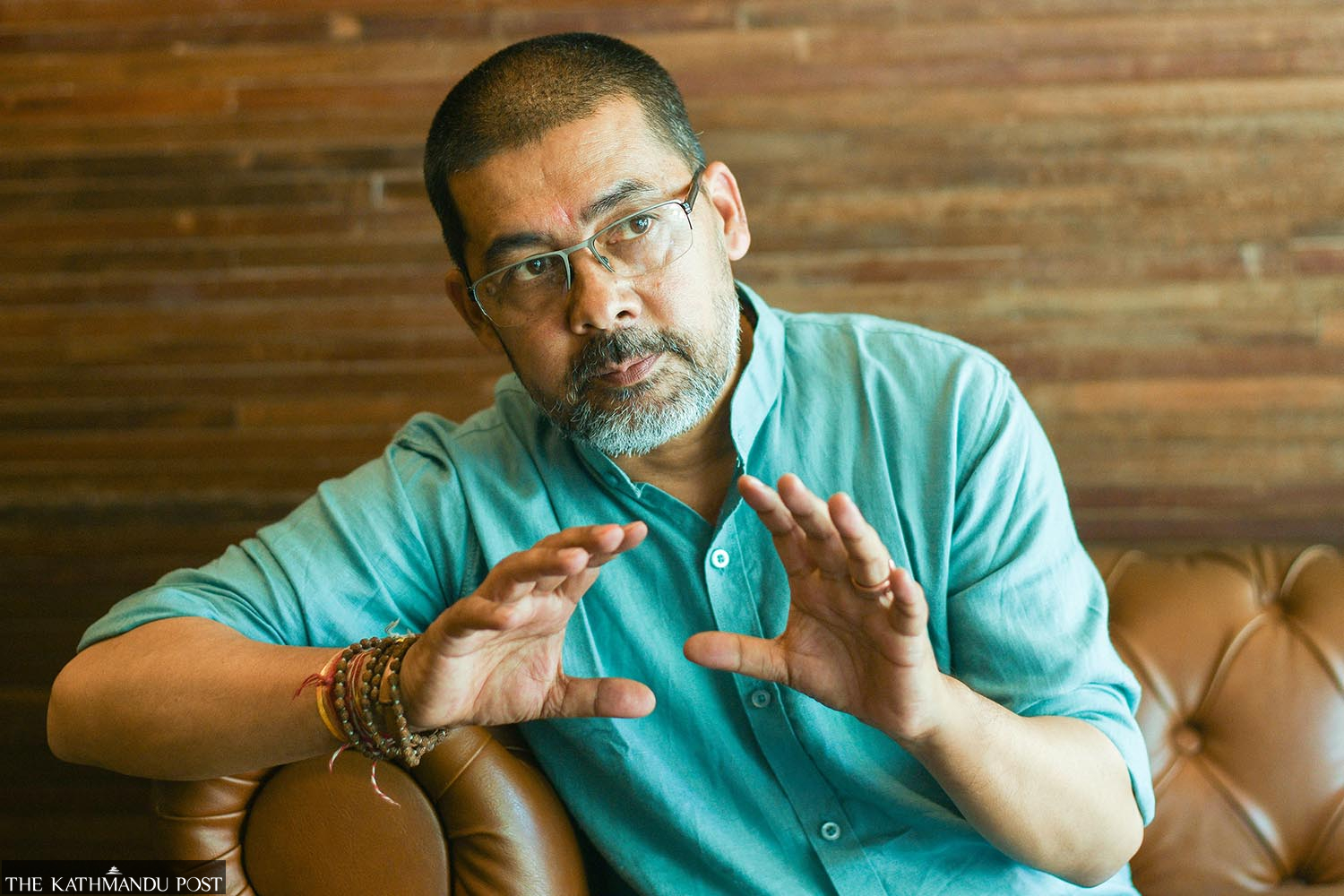Interviews
Events in Nepal must have made India restless
As stability in the region helps China pursue its global goals, it might have seen Nepal’s upheaval as a roadblock to its aspirations.
Biken K Dawadi
Early September’s Gen Z movement brought about a drastic change in Nepal’s political landscape. The country is still gripped with uncertainty while foreign eyes closely observe the political developments. The Post’s Biken K Dawadi sat down with political scientist and geo-political analyst Chandra Dev Bhatta to discuss the dynamics of the protests, its international implications as well as the country’s political future. Excerpts:
Did you observe any pattern in violence during the Gen Z movement?
The protestors carried out indiscriminate vandalisation of public and private properties to express their frustration. There might be other motives but one important factor is that they targeted specific offices which they saw as part of the problem.
For example, they torched the parliament building which they thought was the symbol of power abuse. Likewise, they arsoned the offices of the executive, as they were seen as a symbol of corruption. In the same vein, they torched the Supreme Court which they saw as the centre of injustice.
They targeted multiple businesses, the symbols of crony capitalism which has been generating inequality. Parties and their leaders were attacked primarily because they have been a big source of political instability and mother of all the problems for a long time.
How did the deteriorating state-society relations contribute to the uprising?
The social contract between the state and society is weakening in Nepal. With the adoption of neoliberal policies contrary to what was promised in the constitution, that is, to have a socially oriented state, the state has been reduced to the administrative level.
State machineries were increasingly used for the purpose of extraction. Over time, the Nepali state has also been used and abused by different classes for their own interests. In that process, it weakened to the core and turned out to be a soft state (which makes policies but cannot really implement them).
Capacities of the individual political leaders were strengthened at the cost of state institutions. In fact, there has been systematic erosion of what scholars call ‘Weberian legitimacy’.
How do you analyse the role of international actors during and after the Gen Z uprising?
As is oft-said, correlation is not causation. Oli’s trip to China happened to take place before the protest out of coincidence. We cannot jump into the conclusion that Nepal’s growing closeness to any state caused any other state to orchestrate the regime change. If so, the state we were positioning closer to in the recent months and years might have expressed dissatisfaction over the change.
Forget international actors, the internal conditions were sufficient enough for the type of protest that took place on September 8 and 9. Political parties and their leaders were repeatedly warned about the impending situation in the country but they did not pay much heed to it.
We live in a time of hyper geopolitics and nothing can be ruled out under the given circumstances. But the fact is that the public frustration had crossed all bounds.
What was the reason for the frustration?
There are multiple reasons. As the opening lines from Leo Tolstoy’s novel Anna Karenina says “All happy families are alike, each unhappy family is unhappy in its own way”. This can be equated in Nepal’s case where the political class, irrespective of their ideological differences, have been able to find means for their own happiness but the same was not true for others.
For others, the situation is somewhat similar to what Garrett Harding explained in the Tragedy for the commons. For them, byabastha badliyo tara avastha badaliyana (the system changed, the situation did not), something which Nepal’s political class was not willing to accept.

How do you foresee Nepal’s political future?
If we do not carry out timely surgery of our state institutions, the already existing poly-crisis may turn into a perma-crisis.
The politics of revenge and self-aggrandisement must be stopped. The interim government should consider the concerns of the stakeholders, including all political forces. If major parties are left out, that will create another legitimacy crisis. At the same, we should bear in mind that the demands of Gen Z must be fulfilled. It must be ensured that Gen Z does not hijack the political system as the parties did in the past.
Nepali politics has led to the growth of a parasite class—the jhole. As suggested by a recent social media, the tradition of cultivating such degenerate followers must be brought to an end.
How can the recent change shape the future trajectory of Nepali politics?
The interim government certainly does not have legal standing but it enjoys political legitimacy. While the earlier government has lost its political legitimacy, it does enjoy legal-rational legitimacy. Countries fall into geopolitical traps when they have to rely on others for everything. Shukraniti says relying on others is the greatest pain that humanity can expect. Therefore, we need to be self-reliant on at least three areas: politics, law-making process and economy.
The way regime change took place from the street is something that we have to worry about. The state takeover from the street by the non-state actors or the crowd leaves high chances of repetition. Durga Prasai has now called for a protest after Tihar. This certainly makes our future politics very fragile. External actors can only have their footprints when the internal condition allows that.
How do international actors view the situation in Nepal?
For the past 20 years, a number of protests have taken place all over the world, creating instability on the global level. The world is in transition: Economics and technology are developing at a swift pace, the political systems are not delivering and societies are changing rapidly.
The culture of protests is not limited to Nepal or Asia. We are seeing growing discontent in the US and Europe as well. So, the movement in Nepal is seen as a new data point in a global trend, not drastically different from the protests in Indonesia or Bangladesh.
The only metric on which the Gen Z protest differed significantly to the other protests is the short timeframe in which it achieved regime change. It took less than 30 hours for the government to back down in Nepal whereas it took weeks and months in case of Bangladesh.
What are the current interests of Nepal’s two neighbours, China and India, in Nepal?
There is a global geopolitical shift taking place. The domination of the resident powers is weakening. A tussle between old powers and new powers is brewing. China, for one, seeks a share in the power monopolised by the west.
Both China and India have aspirations of transforming into superpowers and they are actively participating in the global geopolitical shift. For them, a stable region is a backbone for their global aspirations. Only when their neighbourhood is secure can they focus on expanding their influence in other states.
Both states want a stable government in Nepal, preferably one that has interest alignment with them.
How did India observe the Gen Z movement?
India must have been restless due to the political development in Nepal. The way the regime change took place in Nepal sets a precedent for all the states in the region. The Gen Z uprising showed the citizens of states in our region that when frustration accumulates, democratic processes can be undermined by non-state actors.
As India has a democratic system similar to Nepal, it might have similar difficulties in containing people’s frustration and ensuring that it does not flare up into violent protests. The way protests like in Nepal upended everything in less than 30 hours, India must have been nervous.
What about China?
China has a different political system compared to Nepal and India. It has no internal political threats. People-to-people communication between Nepal and China is also not prominent enough for Chinese nationals to get inspired by their Nepali counterparts. As stability in the region enables China to pursue its global aspirations, it might have seen the political upheaval as a roadblock to its aspirations.
How do India and China view the interim government?
The way India and China reacted to the formation of the new government explains how they view it. India’s Prime Minister Narendra Modi has had a telephonic conversation with interim PM Sushila Karki. India has sent an official congratulatory note to her. The Indian envoy to Nepal Naveen Srivastava held a meeting with PM Karki within five days of her appointment. This shows that India is happy with the current government.
China, on the other hand, has not sent an official congratulatory note to PM Karki. The head of governments of Nepal and China have not had any formal communication. Chinese Ambassador to Nepal Chen Song met with the PM only two days after she met the Indian envoy, and quite interestingly, on the day she had the telephonic conversation with Modi.
But these are the developments to date, how the interim government will work in the future will determine how our neighbours view it.




 16.57°C Kathmandu
16.57°C Kathmandu












